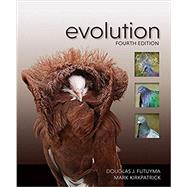Extensively rewritten and reorganized, this new edition of Evolution--featuring a new coauthor: Mark Kirkpatrick (The University of Texas at Austin)--offers additional expertise in evolutionary genetics and genomics, the fastest-developing area of evolutionary biology. Directed toward an undergraduate audience, the text emphasizes the interplay between theory and empirical tests of hypotheses, thus acquainting students with the process of science. It addresses major themes--including the history of evolution, evolutionary processes, adaptation, and evolution as an explanatory framework--at levels of biological organization ranging from genomes to ecological communities.
For Students
Companion Website
The Evolution, Third Edition, Companion Website features review and study tools to help students master the material presented in the textbook. Access to the site is free of charge, and requires no access code. (Instructor registration is required in order for students to access the quizzes.) The site includes the following resources:
* Chapter Outlines and Summaries: Concise overviews of the important topics covered in each chapter.
* Data Analysis Exercises: Expanded for the third edition, these inquiry-based exercises involve students in working with data and analyzing methods and conclusions from published papers.
* Simulation Exercises: Interactive modules that allow students to explore many of the dynamic processes of evolution, and answer questions based on the results they observe.
* Online Quizzes: Quizzes that cover all the major concepts introduced in each chapter. These quizzes are assignable by the instructor.
* Flashcards & Key Terms: Easy-to-use activities that help students learn all the key terminology introduced in each chapter.
* The complete Glossary
For Instructors
Instructor's Resource Library
The Evolution, Third Edition, Instructor's Resource Library includes a variety of resources to help you develop your course and deliver your lectures. The IRL includes the following resources:
* Textbook Figures and Tables: All the figures (including photographs) and tables from the textbook are provided as JPEGs (both high- and low-resolution), reformatted and relabeled for optimal readability when projected.
* PowerPoint Presentations: For each chapter, all of the chapter's figures and tables are provided in a ready-to-use PowerPoint presentation, making it easy to quickly insert figures into your own lecture presentations.
* Answers to the textbook end-of-chapter Problems and Discussion Topics
* Quiz Questions from the Companion Website
* Data Analysis and Simulation Exercises from the Companion Website, with answers
Online Quizzing
A set of online quizzes is available via the Companion Website. These quizzes can be assigned or released for student self-study, at the instructor's discretion. Instructors can also add their own questions to the quizzing system, to create custom quizzes. Results can be viewed online or downloaded for use in gradebook programs. (Instructor registration is required for student access to the quizzes.)








